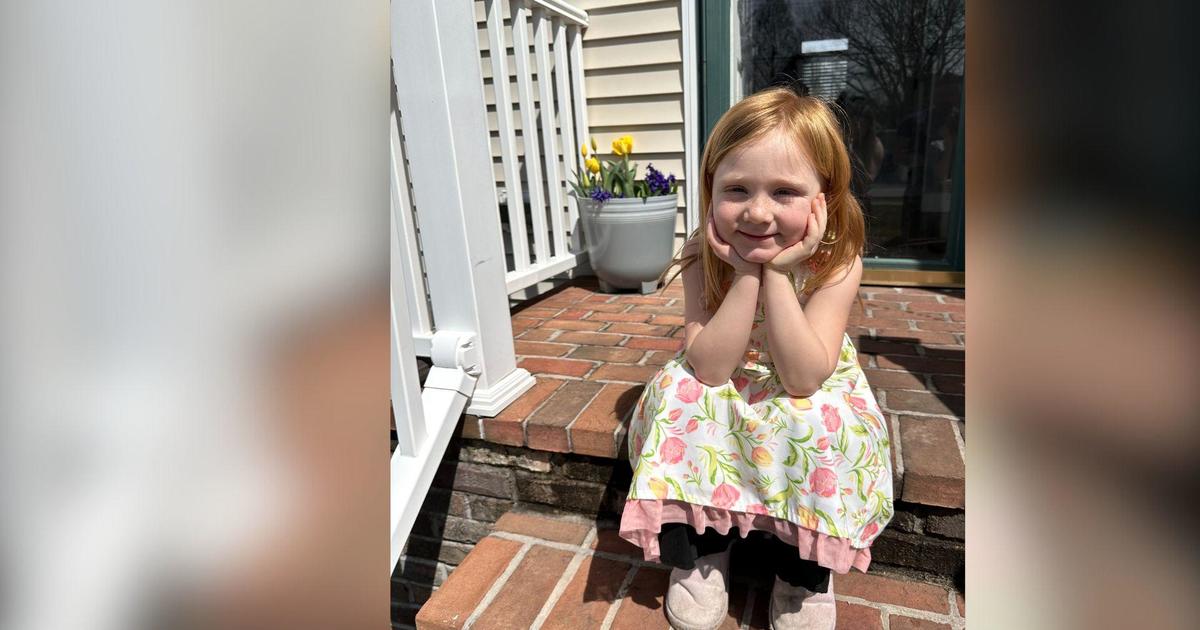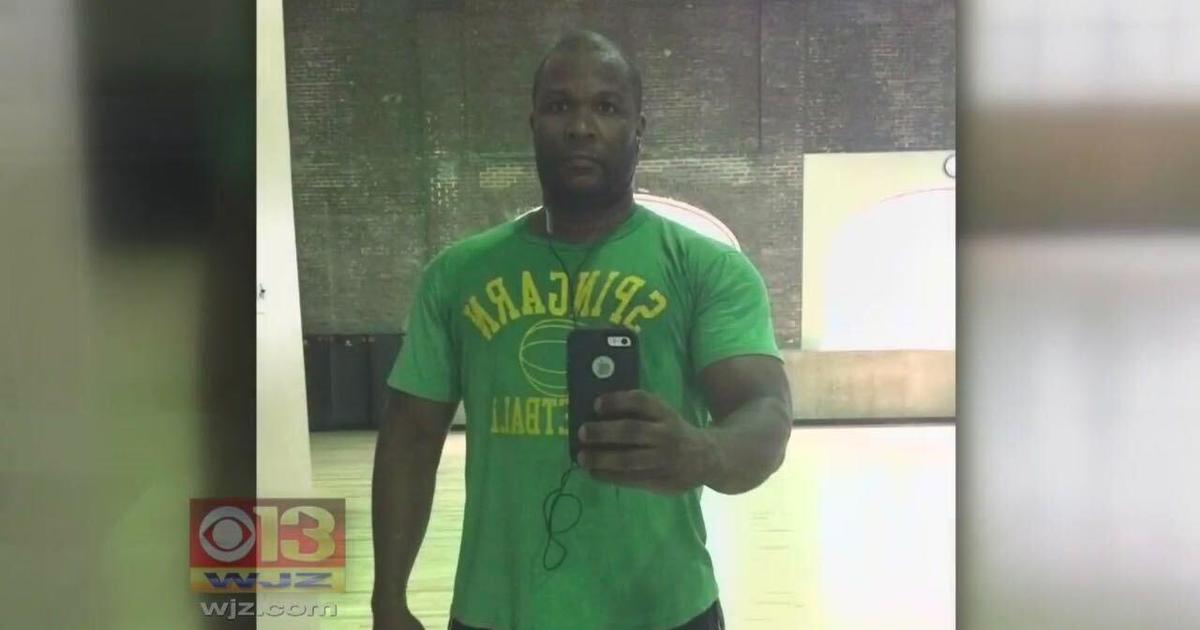Former News Anchor Creates Foundation To Honor Late Daughter
By ANDREA K. MCDANIELS
The Baltimore Sun
BALTIMORE (AP) -- The mole was there for as long as she and her family could remember -- on the bony part of her ankle, usually covered with a sock, so she rarely thought about it.
Then one day the mole started to change. It began to look dusty and gray and Claire Wagonhurst's pediatrician suggested she have it removed and checked for cancer.
A biopsy revealed the worst possible outcome: malignant melanoma, the deadliest form of skin cancer.
After a three-year battle, the 17-year-old -- who played lacrosse and field hockey and who loved fashion -- died from the disease in October, just after the beginning of her senior year at Notre Dame Preparatory School.
Now her family, including her mom, former news anchor Marianne Banister, wants to bring attention to the disease that is usually associated with adults. They have established the Claire Marie Foundation to remember their daughter's life and raise money to educate people about melanoma and to bring "clarity" to the disease.
While the disease is rare in children because it generally takes years of cumulative ultraviolet exposure to damage the skin, doctors are treating more cases each year. The incidences of melanoma have increased by more than 253 percent since 1973 among children, adolescents and young adults, according to research by the Roswell Park Cancer Institute in Buffalo, N.Y.. Ninety percent of pediatric cases occur in children ages 10 to 19. The American Cancer Society says that in 2015, about 74,000 new melanomas will be diagnosed, and about 10,000 people are expected to die of melanoma.
Reasons for the increase aren't entirely known. Some of it could be awareness and better detection by doctors. Doctors also blame the use of tanning beds by teenagers.
Doctors don't know for sure how her daughter got melanoma, Banister said, but they said hormonal changes during puberty could be one cause. It is an area where research is still new.
Wagonhurst's pediatrician, Dr. James E. Fragetta, said the teenager's thyroid-stimulating hormone was elevated at times when her melanoma seemed to present and spread.
"From a global standpoint, there is a lot of investigation that still needs to be done to sort out the mechanism of not just thyroid hormones but all sorts of hormones that change during a child's adolescent development and what relationship they have to the increased rate of melanoma in adolescents as compared to younger children," Fragetta said.
"Certainly we have the suspicion that these are related, but the exact mechanism and the exact pathway has yet to be determined, but is an area that we are very interested in pursuing," he added.
Blonde and fair-skinned, Wagonhurst had gotten routine scans of her skin for odd looking moles and other abnormalities that might signal skin cancer ever since she was a young girl. She never tanned, and she relentlessly slathered on sunscreen each day, her mother said. During the scans, Banister said, the mole at first had appeared normal. It is not unusual in children for the moles to change very quickly with melanoma.
"We had no idea this could happen to our daughter at such a young age," said Banister, formerly of WBAL-TV and now president of Banister Media. "It was devastating."
At times it was hard for Wagonhurst to handle it all. She would disappear into her room engulfed in sadness.
"I want to quit sometimes, but can't. I have to keep going," she said on home video.
And for the most part, Wagonhurst refused to feel sorry for herself. She wanted to keep life normal. To go to school. To be with her friends. She rarely talked about her illness and instead focused on enjoying life's moments.
She went to a party on crutches after a skin graft. Following a chemotherapy session, she headed out to celebrate New Year's Eve with friends. She participated in her school's annual Gym Meet competition, choreographing moves for an aerobics dance routine.
She visited colleges, and in application essays wrote about living with melanoma: "Cancer would not define me. I didn't want to become one of `those kids' who wear their disease like a cloak for all to see, evading all traditional teenaged experiences to hide in illness," she wrote. "Nope, this was merely a bump in my road; a detour perhaps, but nothing that would keep me from my goals."
Melanoma presents differently in children than adults, making it hard to detect. The symptoms in adults will appear as moles larger than an eraser head or moles that are bleeding, said Dr. Zaineb Makhzoumi, assistant professor of dermatology and section head of dermatologic surgery and oncology at the University of Maryland School of Medicine. It may look like a bump or wart in children, she said.
Dr. Eva Simmons O'Brien, a dermatologist who treated Wagonhurst, said that not enough children see specialists for a visual skin exam, which could detect melanoma. A pediatrician may not always be able to tell if a mole is abnormal, she said.
All children should get these scans -- regardless of whether they have questionable moles -- and lesions should be examined more closely with a dermatological scope that allows the doctor to look at it deep into the skin, she said.
Melanoma grows faster in children, but if it is caught early it is highly treatable.
"It remains a rare cancer, but it does have a devastating potential so that is why early detection and recognition is important for any chance of cure," said Dr. Nikhil Khushalani, an associate professor of oncology and medicine at Roswell Park Cancer Institute who specializes in melanoma.
Wagonhurst was not so lucky. She endured chemotherapy and interferon treatments, only to be met with three years of hope and then disappointment as her cancer would disappear and then appear again.
Then a PET scan showed the cancer had spread to her lungs and her liver and her spine -- and eventually ravaged her entire body. She spent her last hours at home, in her own room, surrounded by her mom, her dad, Rocky Wagonhurst, a Comcast Spotlight director of regional and national sales, and her elder sister, Hillary.
Wagonhurst's family and friends have refused to let her memory fade. Through the foundation they have raised money in her honor to teach people about the risk of melanoma in people her age. The family uses the fundraisers as teaching moments. They have also created a website, posted videos to YouTube and made media appearances to spread the word.
They don't talk about the sick Claire. They focus on the teen with the girlie style who liked to wear pretty dresses, who idolized fashion designer Lauren Conrad and looked forward to studying interior design.
Several Baltimore private schools held a dance-a-thon in her honor, Moves for Claire, where they all donned her favorite color: coral. There was the special sale at Lily Pulitzer, one of her favorite stores. And a fashion show featuring classmates from her school.
Handbag designer Danielle DiFerdinando dedicated part of a fall collection to the young girl she had once let shadow her.
"Claire left a tremendous impact on me from the moment I met her," DiFerdinando said in a statement about the handbag line. "She had a contagious smile that lit up the room and I was inspired to spread her amazing energy to young women."
Wagonhurst's family still gets teary when they talk about their beloved daughter and sister. But they hope they can get parents to pay more attention to the risks for melanoma and help save somebody else's life.
"Claire taught us about fighting and never giving up," her dad said. "We want to take her passion and turn it into something positive. We don't want others to go through this pain."
(Copyright 2015 by The Associated Press. All Rights Reserved.)



